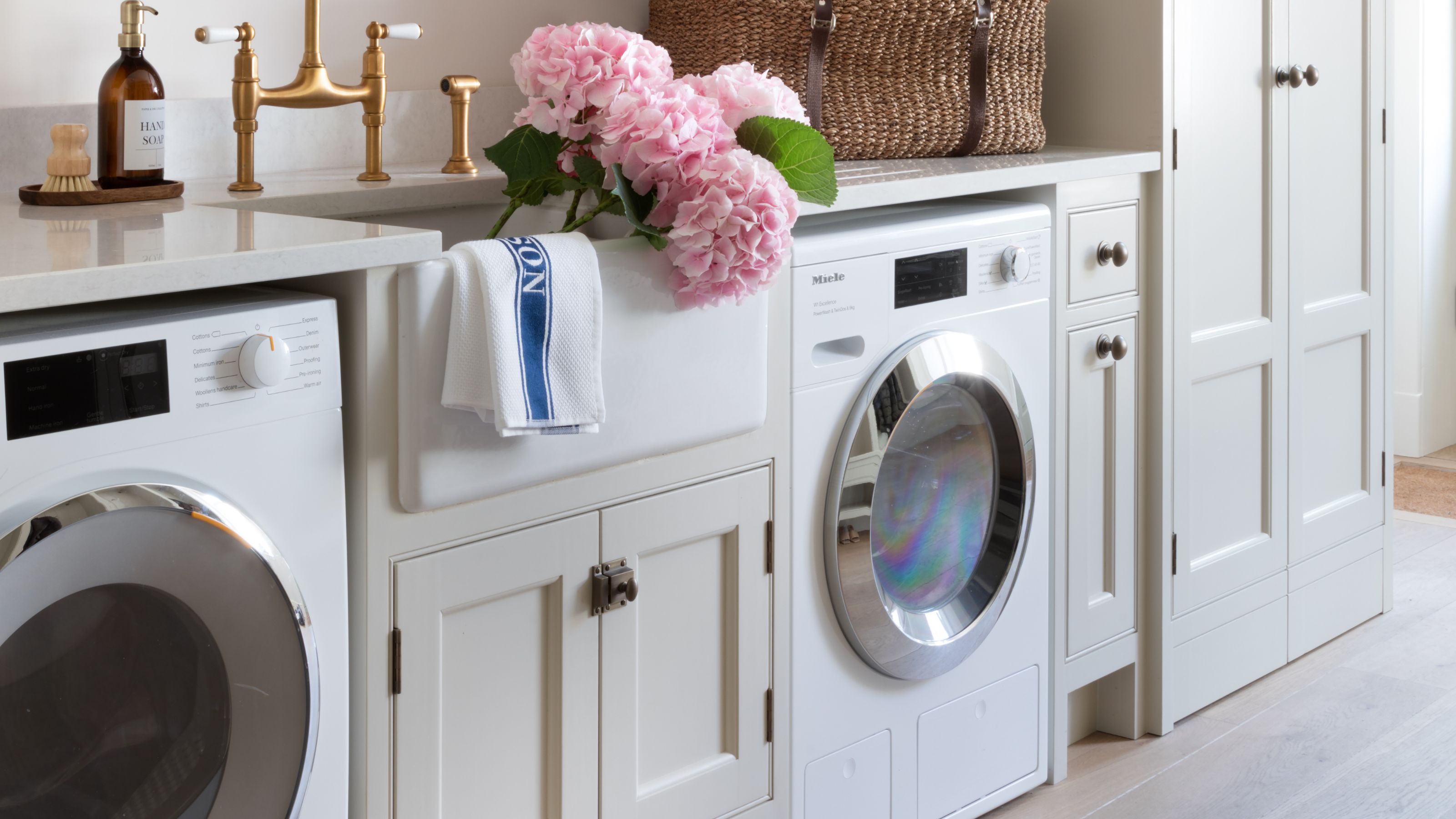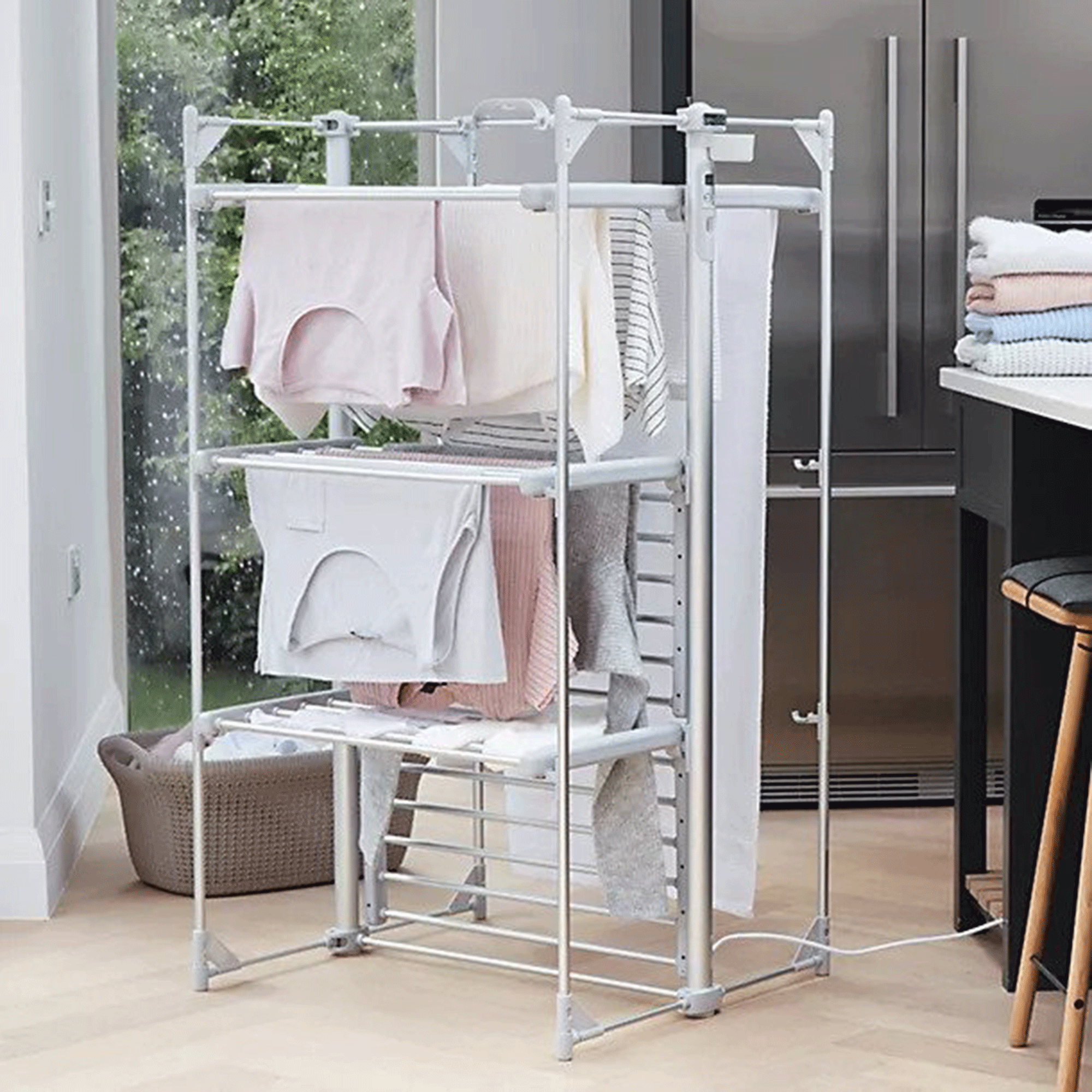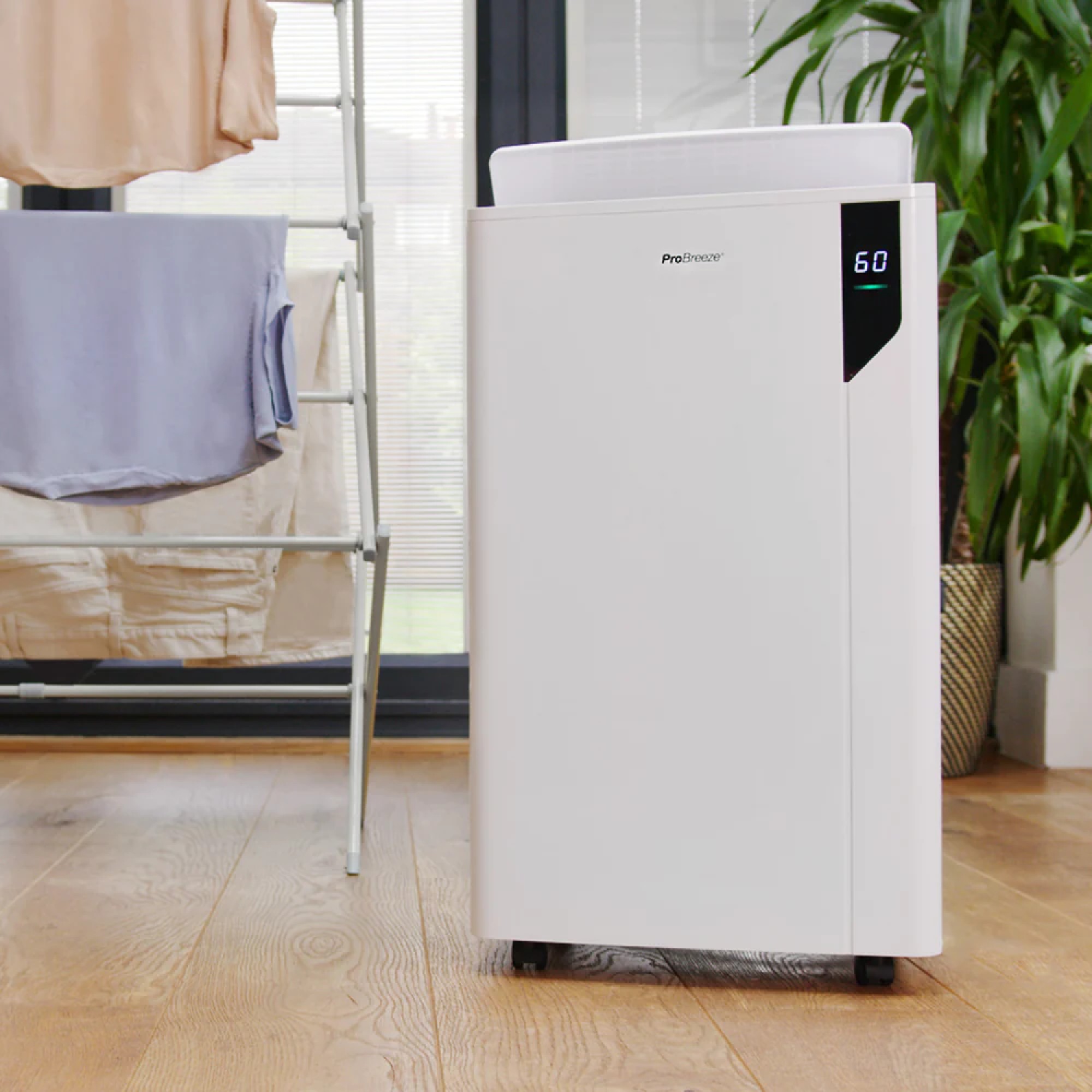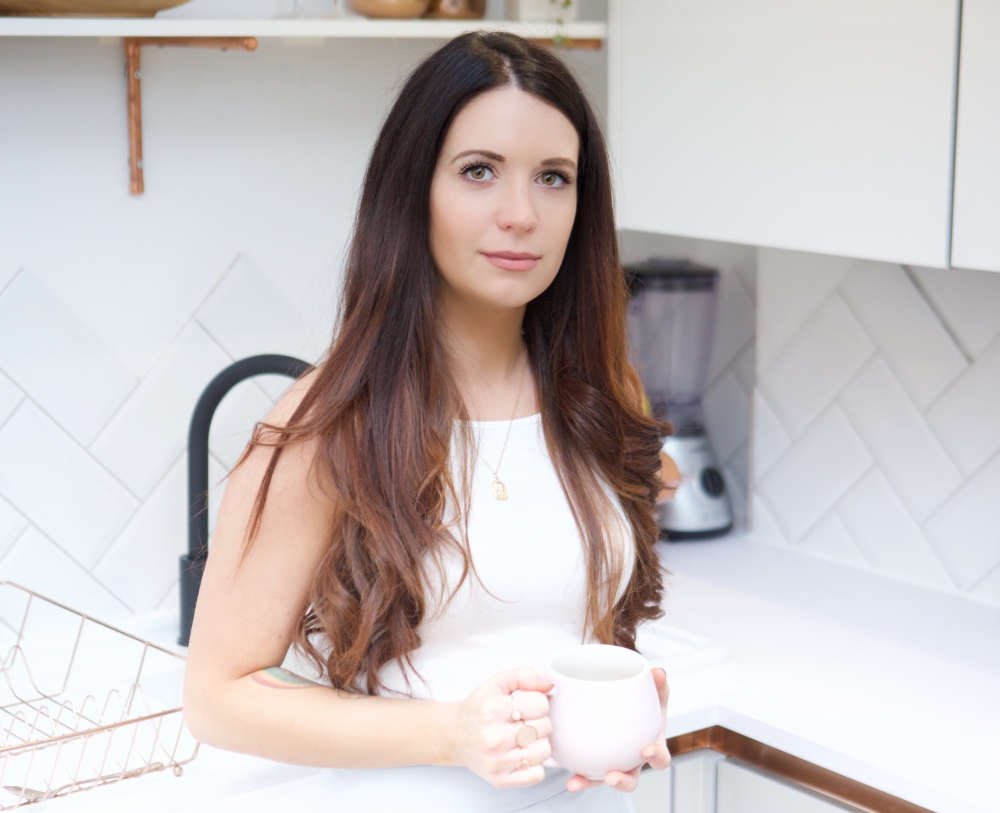Can heated airers cause damp? Experts explain this common problem and how to combat it
Find out how to quickly dry your clothes this winter while keeping your home mould-free


Drying our clothing is a frustrating challenge that we all face during the winter. A heated airer could be the solution, but can heated airers cause damp?
With many of us desperate to avoid being surrounded by washing that takes days to dry, what are the options when it comes to drying our clothes? With inflated energy costs making tumble dryers a luxury piece of kit to run in many homes, heated airers seem like a great alternative.
The only downside is that when used incorrectly they can cause damp. When you use them the right way though, the best heated clothes airers are a great way to speed up how long it takes to dry your washing at a lower cost than tumble dryers.
How do you use a heated airer effectively, and how can you stop them from causing damp? Let’s dive in.

Why can heated airers cause damp?
1. They increase moisture levels
Think of a heated airer as a sort of radiator, with a lot more space for hanging clothes on. We’ve all popped those pieces that we need to dry urgently on the radiator, well a heated airer is much the same - it dries clothing faster, due to the heat that it produces.
While it’s great that we can dry our clothing quickly as and when we need, placing wet fabric onto a warm surface creates moisture, which can increase the humidity levels in your home.
‘Heated airers can lead to dampness in your home because they increase the moisture in the air as the water evaporates from the clothes,’ explains Rohit Dhillon, Owner of 1 Stop Wash Laundry & Dry Cleaning.
Sign up to our newsletter for style inspiration, real homes, project and garden advice and shopping know-how
‘Without proper ventilation, this moisture can accumulate on walls and ceilings, creating the ideal conditions for mould and mildew growth. The key issue is that the warm air from the heated airer carries more moisture, which, if not properly dispersed, settles in your living space.’
Of course mould is the last thing that we want in our homes. It doesn’t look nice, can cause damage to our property and can cause serious health problems too.

2. Poor air circulation
Another reason why electric clothes dryers cause damp is because of poor air circulation in your home. If you’re using a heated airer often then moisture can build up, and it’s this build up of moisture that creates the perfect environment for mould to grow.
'Heated areas themselves don’t directly cause damp, but the process of heating can influence moisture levels,' says Gwilym Snook, appliance expert at AO.com. 'When you’re heating a space, the air temperature rises meaning the air can hold moisture.'
'If this is not properly vented, this moisture accumulates, condenses, and leads to dampness. Damp tends to become a problem during winter when the heating is on and the windows are cooler from outside temperatures.'
The good news is that using heated airers to dry your clothes this winter isn’t off the table. With just a little bit of effort you can dry your clothes quickly and efficiently while also ensuring you don’t end up with damp in your home.
How to reduce the damp caused by heated airers
There are a few simple and easy ways that you can reduce dampness in your home caused by electric clothes dryers, and it’s important to avoid heated airer mistakes. You could try all of these tips, or just one or two, to manage humidity levels. The option that works for you will very much depend on the time of year, where you dry your clothes and what kit you have at home.

1. Open windows
The most simple solution to reduce the moisture caused by heated airers in your home is to open your windows. When you have your heated airer on, keep the door closed to avoid moisture getting everywhere in the house, and keep windows open in the room for ventilation.
While this might not be possible all year round, just having the windows open a crack will help stop moisture from building up.

2. Use an extractor fan
If your bathroom is your drying room of choice, simply make sure your extractor fan is on whenever you are using your heated airer. Just like your extractor fan removes damp air from the room when you have a shower, it will work in the same way when you’re using a heated airer too. This is a great option if you want to avoid buying any extra bits of kit to reduce damp.
3. Try a humidity monitor
A great way to keep an eye on the moisture levels in your home is by investing in a humidity monitor, from Amazon. Typically inexpensive, these portable monitors allow you to keep an eye on both the temperature and the humidity levels in each room.
The humidity levels in your home should ideally be around 40-60%, any higher and you might find that you have a damp problem which could cause mould to grow. Using a humidity monitor will help you keep on top of things, and you’ll know when you need to act or make some changes to reduce moisture levels.
‘Using a humidity monitor is a great way to keep track of moisture levels in your home when using a heated airer,’ adds Rohit Dhillon. 'By keeping an eye on humidity, you can ventilate the room when levels get too high, preventing damp and mould from forming.'

4. Use a dehumidifier
Another way of reducing damp caused by using a heated airer is to run a dehumidifier alongside your airier. If you already own a dehumidifier then it just makes sense to use it whenever you are using your airer. If you don’t have one but plan on using your heated airer a lot during the winter, it’s a worthwhile investment and you can pick up the best dehumidifiers for tackling damp for as little as £50.
A dehumidifier works much like an extractor fan, by drawing the moisture out of the air to ensure humidity levels don’t get too high. Make sure your dehumidifier is always in tip top working condition by learning how to clean a dehumidifier.
'Dehumidifiers are easily one of the most effective ways to tackle excess moisture and reduce the risk of dampness,’ adds Gwilym Snook from AO. ‘These handy appliances extract moisture directly from the air which reduces overall humidity and also prevents condensation from forming on surfaces.’
FAQs
Do electric clothes dryers cause mould?
If precautions aren’t put in place, electric clothes dryers can cause mould. This is because when you put wet clothing onto a heated surface moisture is released into the air which increases humidity levels. Damp environments can lead to mould growing on walls and behind furniture.
The good news is that it’s relatively easy to manage humidity levels when using an electric clothes dryer. Improving ventilation is key, either by opening windows, using an extractor fan or a dehumidifier.
What are the disadvantages of electric clothes dryers?
Are heated airers worth it? Or do they just cause more problems than solutions? The main disadvantage of using an electric clothes dryer is that they can increase humidity levels, especially when used regularly. During the winter our homes are more susceptible to damp anyway, and when you throw a heated airer in the mix too, moisture levels could get too high and cause mould.
'Of course the main disadvantage of a heated airer is that they can increase humidity levels, but they can also take up a lot of space and may not be as energy efficient as other drying methods,’ adds Rohit Dhillon of 1 Stop Wash Laundry & Dry Cleaning.
We all need to dry our clothes during the winter, and regularly using a tumble dryer can be expensive. Electric clothes dryers are a good alternative, but are heated airers expensive to run? In comparison to tumble dryers, they are definitely cheaper, but if you want to keep your bills down even more, a dehumidifier might be another good option.
If you do choose to use a heated airer, it’s important to manage humidity levels, particularly when you’re using them often, to ensure you don’t end up with a damp issue.

Eilidh Williams has been a freelance lifestyle copywriter for over ten years. Having graduated with a Bachelor of Arts in Creative and Media Writing in 2011, over the years she has written for a variety of unique and inspiring lifestyle brands and publications focusing on fashion, beauty, sustainable and mindful living, and of course homes and interiors.

